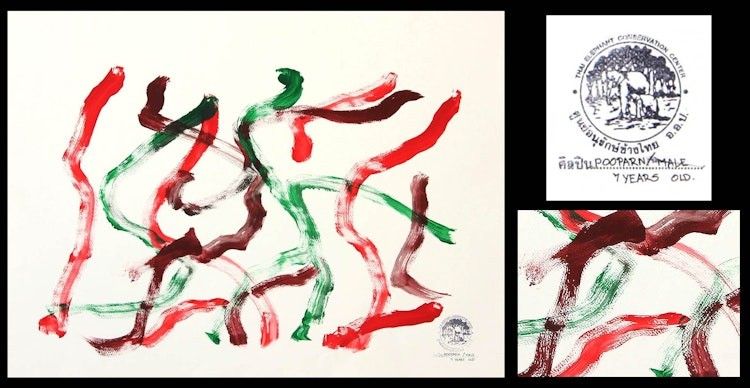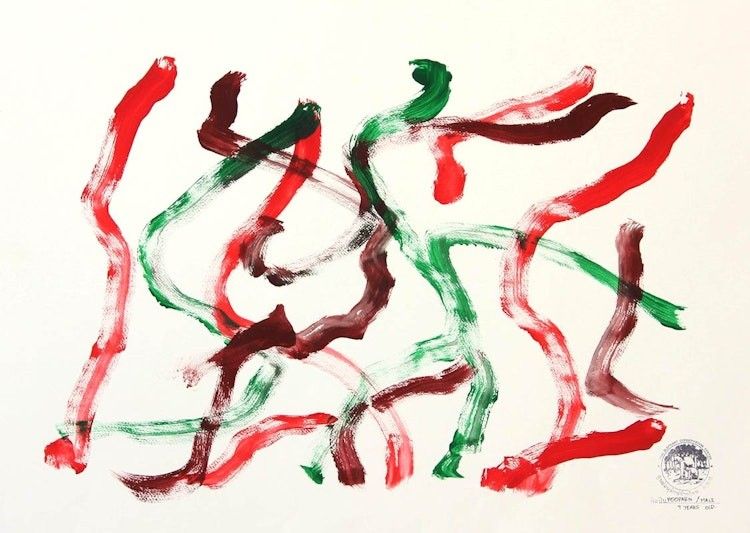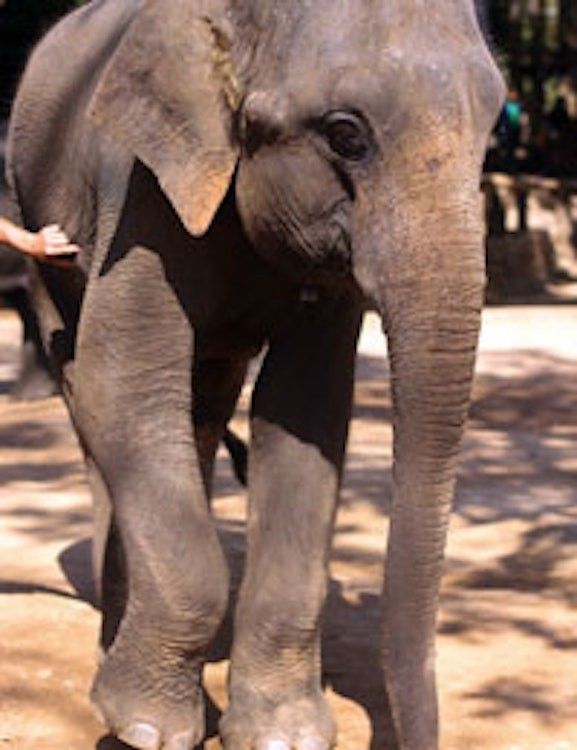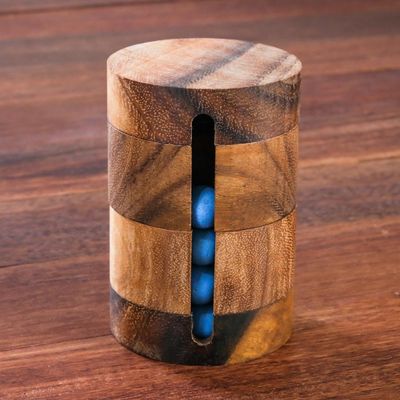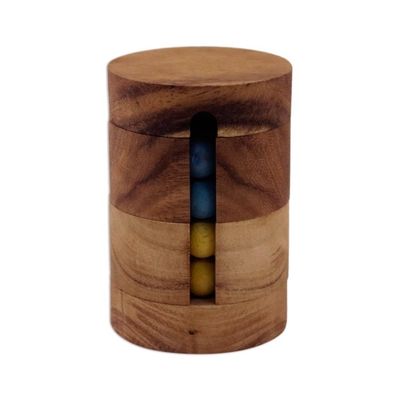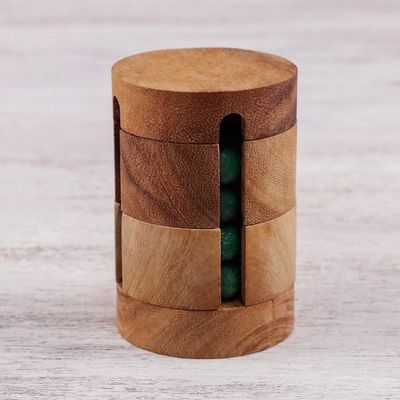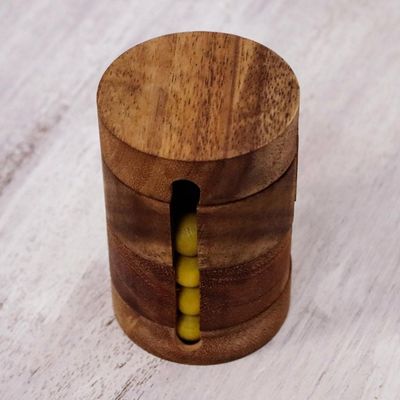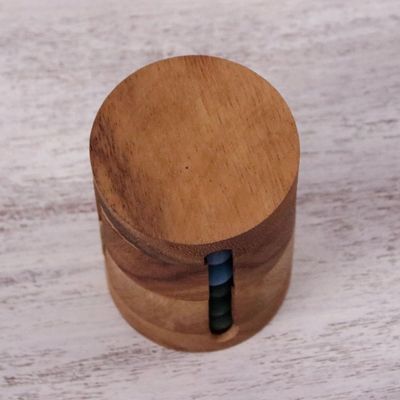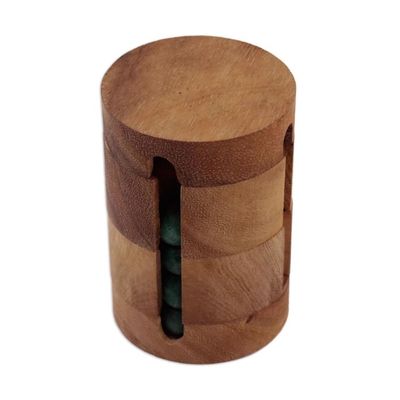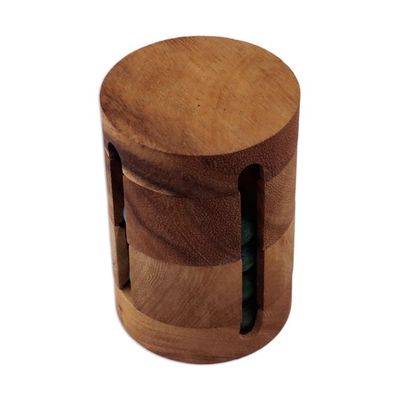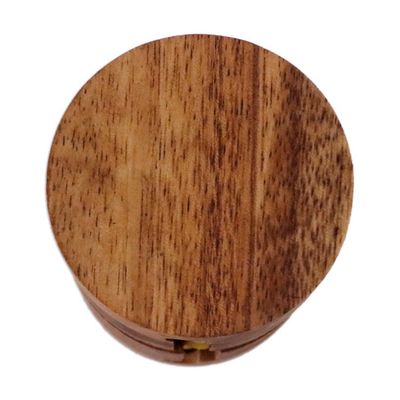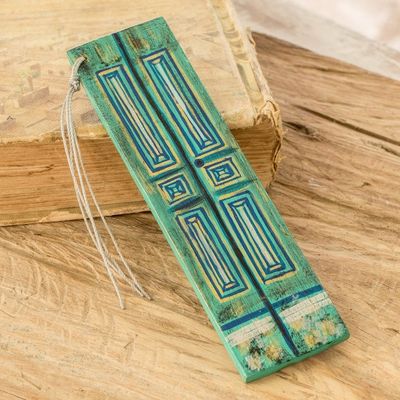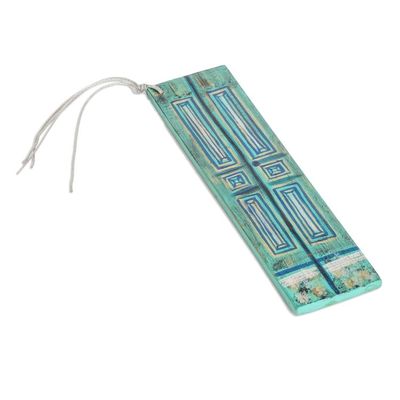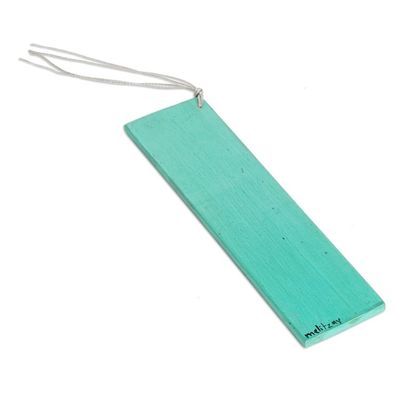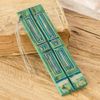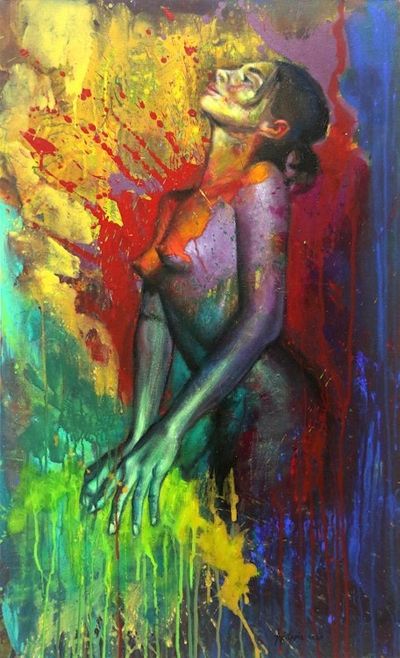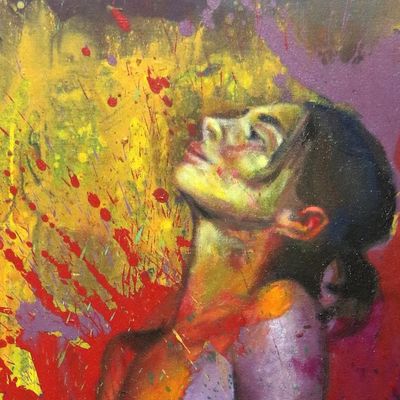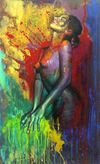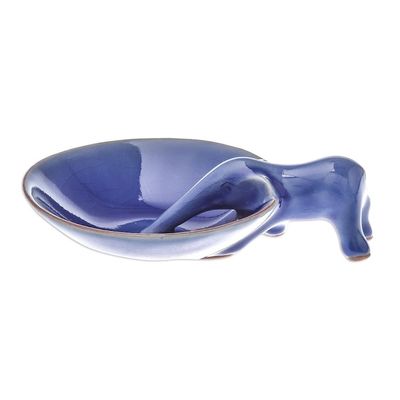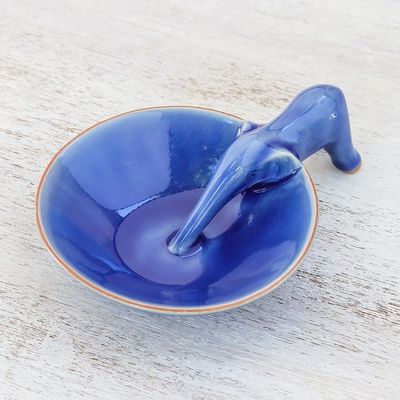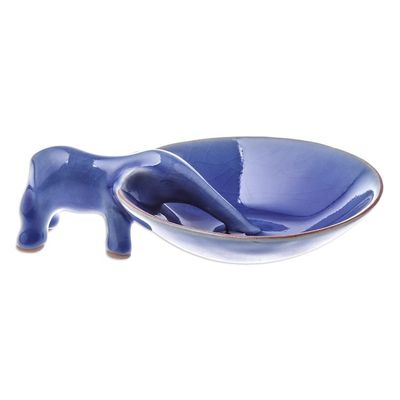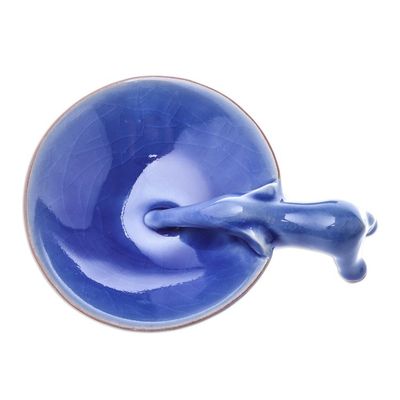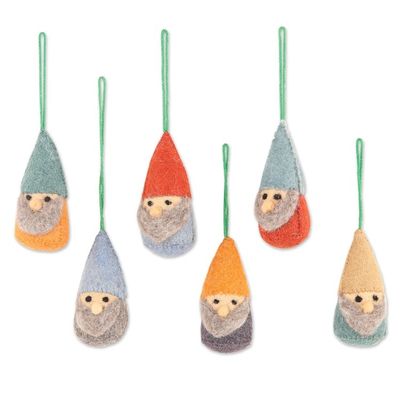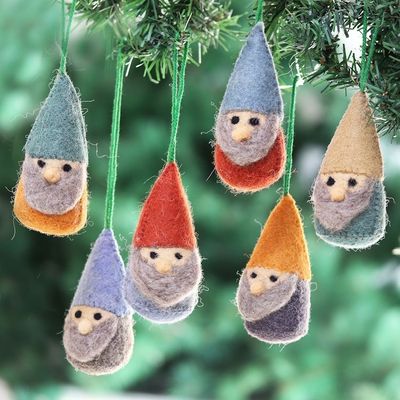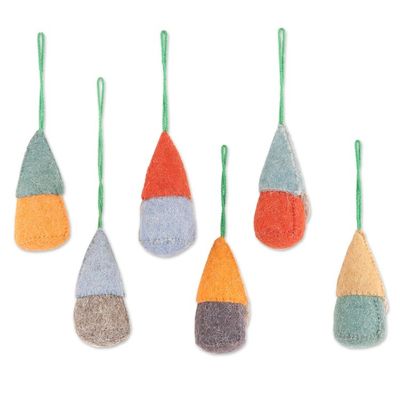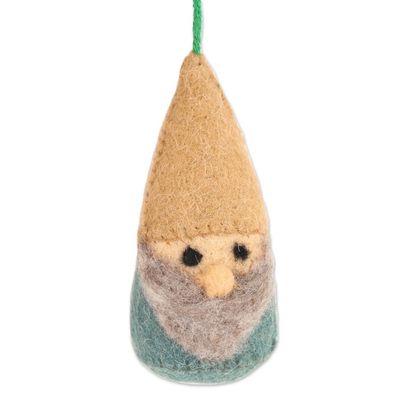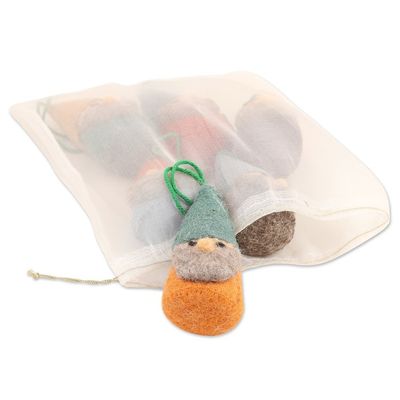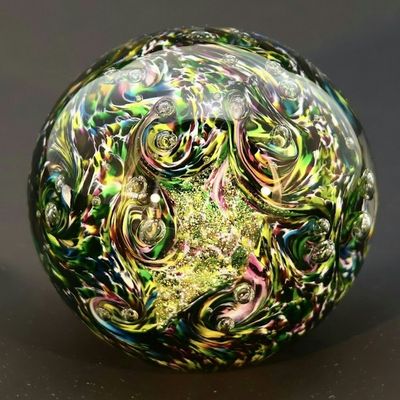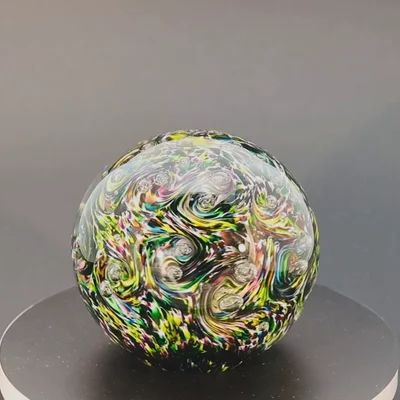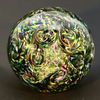
Authentic Thai Elephant Art in Christmas Colors 'Christmastime' Item ID: 2669888994
$369.99This is your own listing item.
100% Happiness Guaranteed!
![]() Shop with Confidence
Shop with Confidence
![]() Easy 30 day returns!
Easy 30 day returns!
Other favorites
View moreMeet the maker

Pooparn elephant paintings
Seedaw Pooparn used to walk on the hot paved roads, in danger of being hit by a car or truck. The Fon Yad Diew Foundation (Rain Drop Foundation) purchased this young male from his owner but they lacked a mahout to take care of him. So on November 11, 2008, Pooparn was adopted by the Thai Elephant Conservative Center.
The cheerful pachyderm likes to wag his ears and dance back and forth; his favorite foods are corn and watermelon. His tusks are quite small and can be seen peeking out at the corners of his mouth. His name derives from the Phu Phan Ratchaniwet Palace in Sakon Nakhon province.
In addition to his painting skills, Pooparn plays a role in the courtyard show, dragging a single timber and playing the angklung - a traditional Thai instrument crafted of bamboo and resembling a xylophone.
For centuries, elephants earned their keep by hauling trees for Asia's logging industry. Deforestation and logging restrictions led to massive unemployment for the elephants, with the result that many, dependent on keepers who could no longer afford to care for them, simply died of neglect. The Asian elephant population dwindled, and these magnificent animals became an endangered species.
In 1998, searching for new ways to raise rescue funds and worldwide public awareness, elephant expert and author Richard Lair, advisor to the royal Thai Elephant Conservation Center (TECC), conceived of a novel plan. He invited to Asia two media savvy, New York-based conceptual artists - Vitaly Komar and Alexander Melamid - to help him create a publicity campaign while training rescued Asian elephants to paint. Art Historian Mia Fineman traveled with Komar and Melamid to Asia, helping write "When Elephants Paint," a fascinating book about the venture. (The book notes that wild elephants naturally doodle on the ground with twigs and pebbles - a proclivity that might explain the ease with which they take to painting.)
As a result of Lair's project, numerous elephants learned to paint in Asia, and hundreds if not thousands of news reports have brought the story of this endangered species to the world's attention.
Today, under the ongoing tutelage of Richard Lair, ten of the TECC's 48 elephants participate in regular painting sessions. During these sessions, the sanctuary elephants stand contentedly before easels, entertaining themselves by wrapping the tips of their trunks around artists' brushes, dipping those brushes into buckets of colorful paints, and then sweeping the paint up, down, and across paper canvases.
The TECC artists are now the most famous paintings elephants in the world. Their paintings, compared by some critics to the works of such renowned abstract expressionist artists as Jackson Pollock, Willem de Kooning, and Franz Kline, have been exhibited internationally and have auctioned for thousands of dollars apiece at such august venues as Christie's.
The cheerful pachyderm likes to wag his ears and dance back and forth; his favorite foods are corn and watermelon. His tusks are quite small and can be seen peeking out at the corners of his mouth. His name derives from the Phu Phan Ratchaniwet Palace in Sakon Nakhon province.
In addition to his painting skills, Pooparn plays a role in the courtyard show, dragging a single timber and playing the angklung - a traditional Thai instrument crafted of bamboo and resembling a xylophone.
For centuries, elephants earned their keep by hauling trees for Asia's logging industry. Deforestation and logging restrictions led to massive unemployment for the elephants, with the result that many, dependent on keepers who could no longer afford to care for them, simply died of neglect. The Asian elephant population dwindled, and these magnificent animals became an endangered species.
In 1998, searching for new ways to raise rescue funds and worldwide public awareness, elephant expert and author Richard Lair, advisor to the royal Thai Elephant Conservation Center (TECC), conceived of a novel plan. He invited to Asia two media savvy, New York-based conceptual artists - Vitaly Komar and Alexander Melamid - to help him create a publicity campaign while training rescued Asian elephants to paint. Art Historian Mia Fineman traveled with Komar and Melamid to Asia, helping write "When Elephants Paint," a fascinating book about the venture. (The book notes that wild elephants naturally doodle on the ground with twigs and pebbles - a proclivity that might explain the ease with which they take to painting.)
As a result of Lair's project, numerous elephants learned to paint in Asia, and hundreds if not thousands of news reports have brought the story of this endangered species to the world's attention.
Today, under the ongoing tutelage of Richard Lair, ten of the TECC's 48 elephants participate in regular painting sessions. During these sessions, the sanctuary elephants stand contentedly before easels, entertaining themselves by wrapping the tips of their trunks around artists' brushes, dipping those brushes into buckets of colorful paints, and then sweeping the paint up, down, and across paper canvases.
The TECC artists are now the most famous paintings elephants in the world. Their paintings, compared by some critics to the works of such renowned abstract expressionist artists as Jackson Pollock, Willem de Kooning, and Franz Kline, have been exhibited internationally and have auctioned for thousands of dollars apiece at such august venues as Christie's.

Thailand Fulfillment Hub
In Thailand, artistic skills and traditions have been passed down from generation to generation. As you explore our Thailand Collection you will discover handwoven silks and hand embroidered textiles, celadon and benjarong pottery, teak carvings, lacquerware and exquisite jewelry. All are handcrafted in traditional and contemporary designs by talented Thai artisans.
